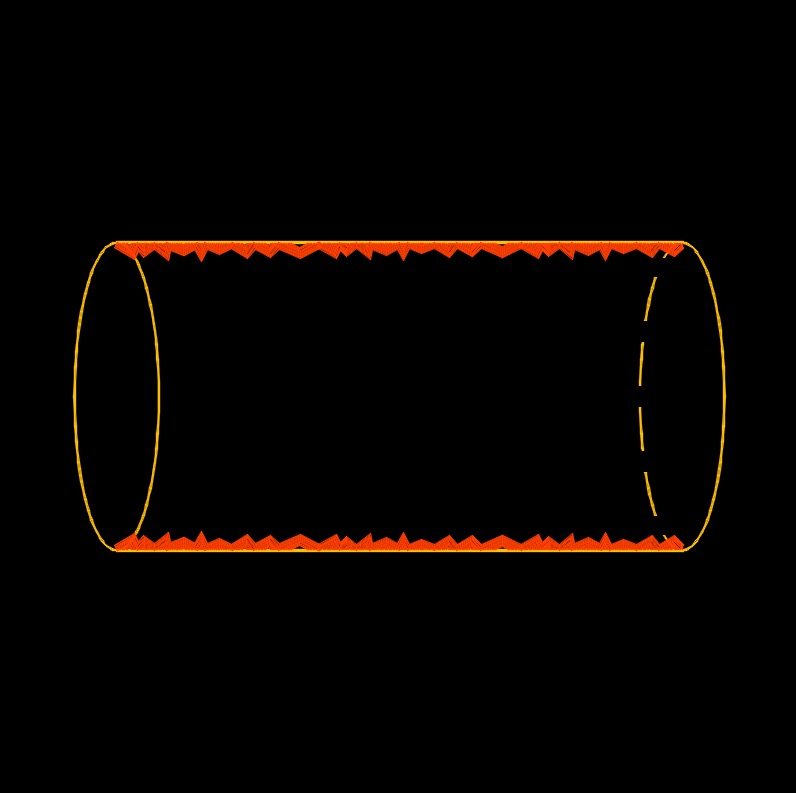Relative Roughness
Relative Roughness formula |
||
|
\( k \;=\; \dfrac{ \epsilon }{ d }\) (Relative Roughness) \( \epsilon \;=\; k \cdot d \) \( d \;=\; \dfrac{ \epsilon }{ k }\) |
||
| Symbol | English | Metric |
| \( k \) = Relative Roughness | \( dimensionless \) | \( dimensionless \) |
| \( \epsilon \) (Greek symbol epsilon) = Absolute Roughness | \( in \) | \( mm \) |
| \( d \) = Pipe Inside Diameter | \( in \) | \( mm \) |
 Relative roughness, abbreviated as k, also known as the roughness coefficient or the hydraulic roughness , a dimensionless number, of a pipe is a ratio of the surface roughness to the diameter of the pipe. Since the relative roughness is a dimensionless number, both the absolute roughness and diameter must carry the same units. The relative roughness is used with the Moody Diagram when solving for the friction factor of a system. The relative roughness provides a measure of the impact of surface roughness on fluid flow. It affects the resistance to flow and pressure drop in a conduit. In general, a higher relative roughness corresponds to a rougher surface, resulting in increased frictional losses and reduced flow capacity.
Relative roughness, abbreviated as k, also known as the roughness coefficient or the hydraulic roughness , a dimensionless number, of a pipe is a ratio of the surface roughness to the diameter of the pipe. Since the relative roughness is a dimensionless number, both the absolute roughness and diameter must carry the same units. The relative roughness is used with the Moody Diagram when solving for the friction factor of a system. The relative roughness provides a measure of the impact of surface roughness on fluid flow. It affects the resistance to flow and pressure drop in a conduit. In general, a higher relative roughness corresponds to a rougher surface, resulting in increased frictional losses and reduced flow capacity.
The relative roughness is an essential parameter in various flow calculations and equations, such as the Darcy-Weisbach equation, which is used to determine the head loss or pressure drop in pipes and channels. It is commonly provided as a characteristic value for different types of conduits and materials to aid in the analysis and design of fluid flow systems.
Relative Roughness CALCULATOR

